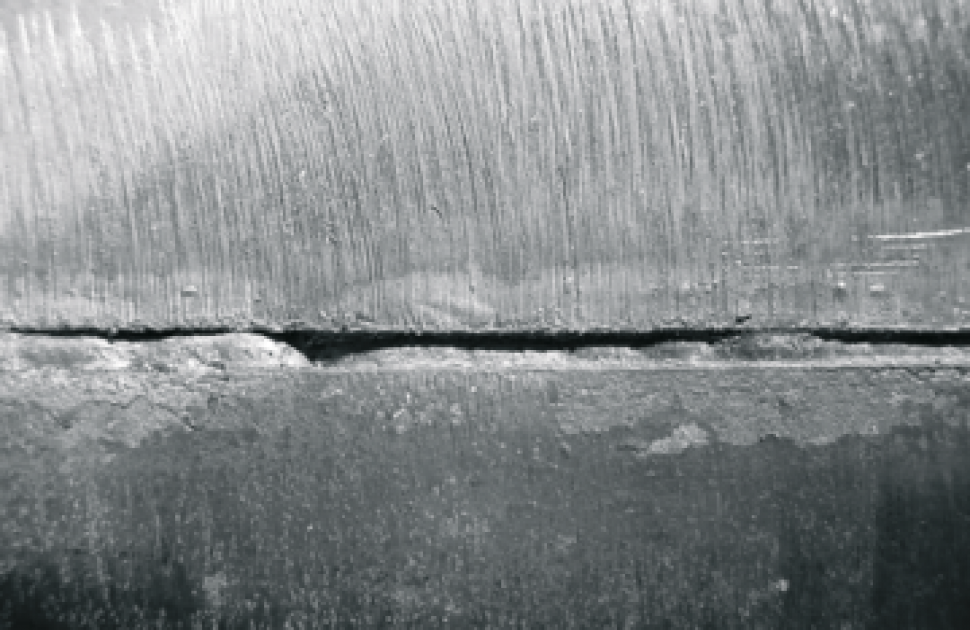Understanding the Causes and Solutions for Undercut Welding in Steel Manufacture Procedures
In the realm of steel manufacture procedures, the event of undercut welding presents a substantial challenge that requires a comprehensive understanding of its causes and viable solutions. The elaborate interplay of numerous aspects throughout welding procedures can result in this unfavorable phenomenon, impacting the architectural honesty and overall top quality of the bonded joints - Preventing weld undercut. By studying the origin triggers of undercut welding and exploring effective therapeutic measures, producers can elevate the requirement of their handiwork and guarantee the production of perfect metal parts
Typical Reasons For Undercut Welding
Regularly overlooked in metal construction, undercut welding takes place due to various variables that demand meticulous focus and expertise to be properly minimized. In addition, improper welding strategies, such as making use of the incorrect welding angle or travel speed, can additionally add to damage formation. The selection of welding criteria, such as voltage, present, and cable feed rate, plays a considerable duty in the event of undercut welding.
Impact of Incorrect Welding Parameters
Unreliable welding criteria can considerably jeopardize the honesty and quality of bonded joints in steel construction processes. The influence of inaccurate welding criteria manifests in numerous means, leading to architectural weak points and problems in the bonded elements. Careful focus to welding specifications is extremely important to make certain the manufacturing of high-grade welds with the wanted mechanical homes and structural stability.
Impact of Improper Lantern Angle
Inappropriate lantern angle in welding operations can significantly impact the top quality and honesty of the last weld joints in metal fabrication processes. Damaging is a typical welding defect where a groove creates along the weld toe, compromising the joint and endangering its architectural integrity.
A lantern angle that is as well steep can lead to not enough penetration, insufficient combination, and increased spatter. On the various other hand, a lantern angle that is as well superficial can result in extreme penetration, burn-through, and distortion of the base product. Preventing weld undercut. Appropriate lantern angle is necessary for guaranteeing regular weld top quality, stamina, and look
To stop undercutting and various other flaws triggered by incorrect lantern angles, welders should be trained to keep the proper lantern angle throughout the welding process. Normal tracking and adjustment of lantern angles during welding can help accomplish sound welds with very little defects.
Function of Inadequate Welding Methods

An additional facet of poor welding techniques is improper weld prep work. Inadequate cleansing of the base metals, wrong joint layout, or inadequate side preparation can all contribute to undercut welding. Moreover, inadequate protecting gas coverage or making use of the wrong kind of gas can cause insufficient blend and the formation of undercut official source issues.
To deal with the duty of insufficient welding methods in metal fabrication processes, it is important to supply thorough training for welders. Correct education on welding parameters, joint prep work, and shielding gas option can assist prevent undercut welding and make certain premium welds in metal manufacture projects.
Reliable Solutions for Undercut Welding
Attending to undercut welding in steel fabrication calls for implementing efficient services to enhance weld top quality and structural integrity. One of the key remedies to deal with undercut is to change welding specifications such as voltage, existing, and take a trip speed to guarantee proper heat input and combination. By fine-tuning these setups, welders can avoid too much melting of the base steel and filler product, minimizing the probability of undercut formation.
Furthermore, appropriate joint preparation is crucial in stopping undercut. Ensuring tidy base steel surfaces complimentary of pollutants and using the proper bevel angle can aid advertise better weld penetration and minimize the danger of undercut - Preventing weld undercut. Employing suitable welding methods, such as oscillating the lantern or weaving, can likewise assist in distributing warmth uniformly and filling up the weld joint appropriately, lessening the opportunity of undercut issues
Moreover, picking the right welding consumables, including electrodes and filler steels, is important in alleviating undercut. Using materials with ideal chemical structures check out this site and mechanical residential properties can add to achieving audio welds with very little undercut. Normal inspection and quality control actions must also be carried out to detect and resolve undercut concerns promptly, making sure the total honesty of made steel parts.

Verdict
Finally, comprehending the causes and remedies for undercut welding in metal construction procedures is essential for achieving top notch welds. By resolving typical reasons such as incorrect welding criteria, inappropriate torch angle, and poor welding techniques, welders can avoid undercutting and ensure strong, durable welds. It is important to pay focus to these elements and apply efficient services to improve the total welding process and end product top quality.
